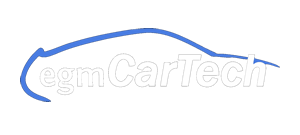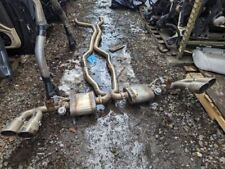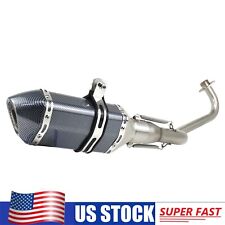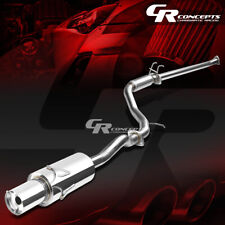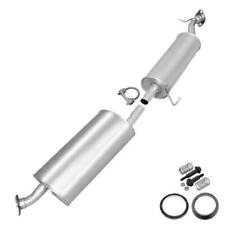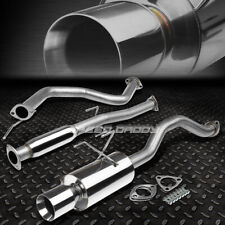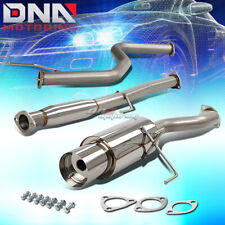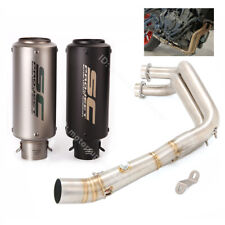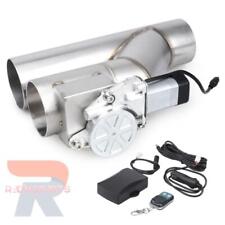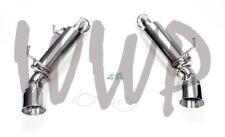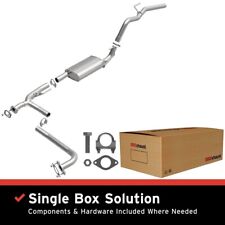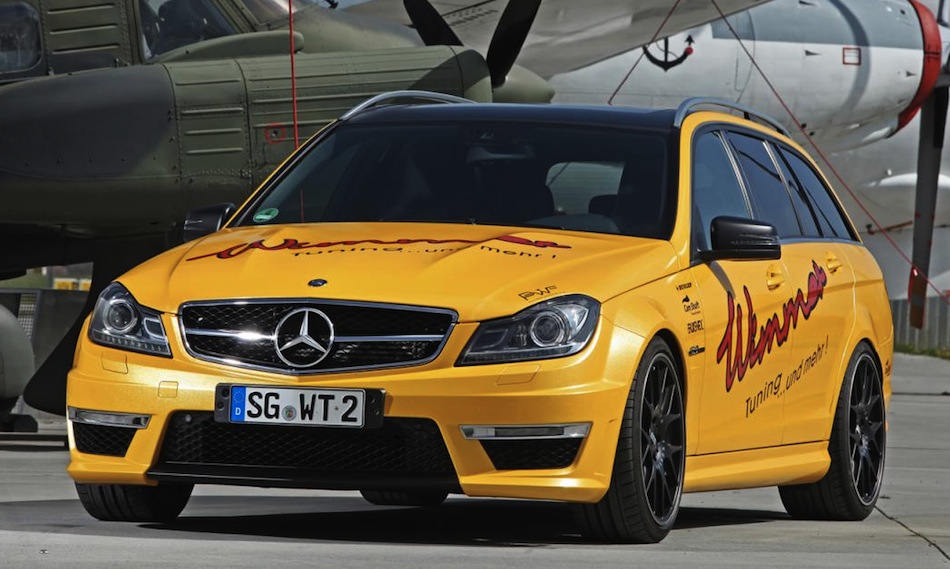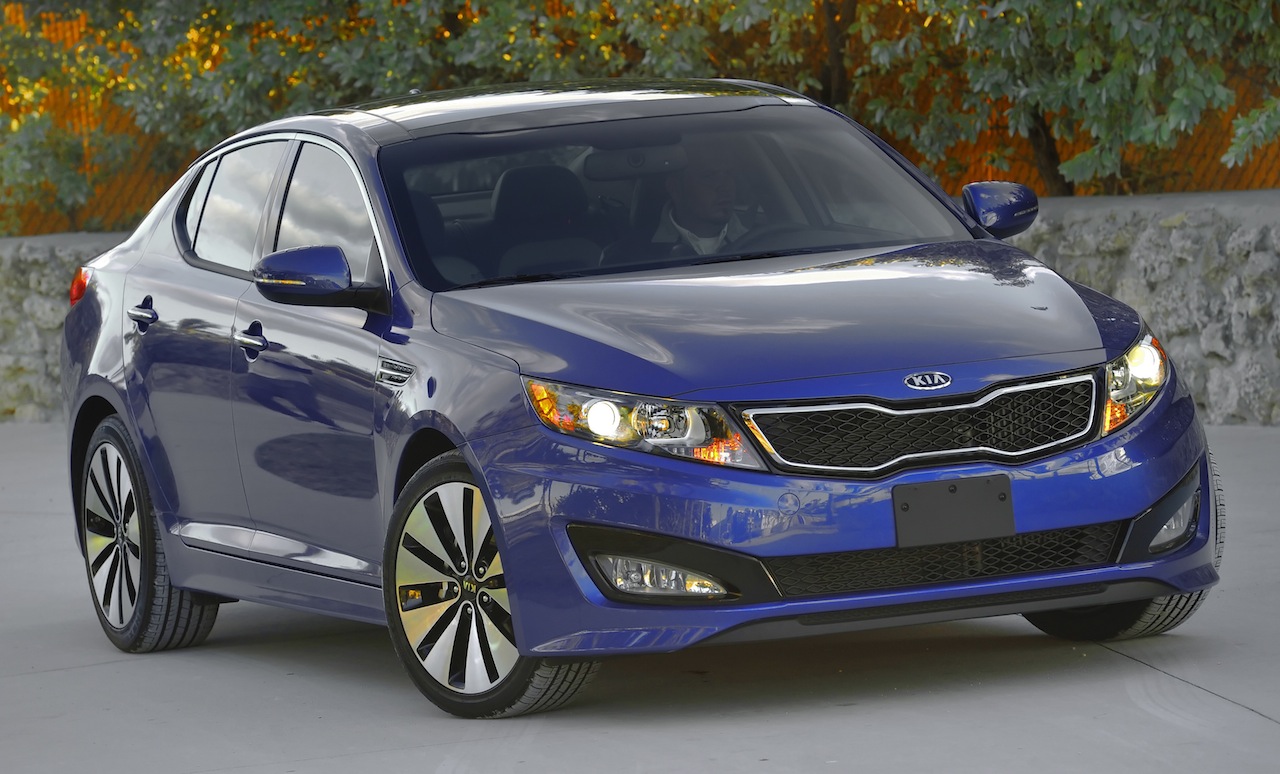2012 Hyundai i40 debuts in Geneva, gets four boring and fuel-efficient engines

At the 2011 Geneva Motor Show this week, Hyundai unveiled the 2012 Hyundai i40, which looks to be the station wagon version of the Hyundai Sonata sedan.
While plans could change later, Hyundai says that the i40 is the “company’s first D-segment vehicle to be developed specifically for the European market, with a package of powertrains, equipment and technology tailored for European tastes.” We’re not sure yet when or if it will come to the United States.
“The all-new i40 perfectly captures the spirit of Hyundai’s new brand slogan ‘New Thinking. New Possibilities.'” said Allan Rushforth, Senior Vice President and COO of Hyundai Motor Europe. “The i40 is a sign of how far Hyundai has come in recent years, and truly embodies what we mean when we talk about being a ‘modern premium’ brand.
The 2012 Hyundai i40 is available with a choice of four Euro V-complaint engines including two gasoline and two diesels. All four units range from 113-hp to 174-hp. Of course that won’t allow you any impressive performance numbers but you will definitely be saving money at the pump.
Check out the press release and the high-res gallery after the jump.
2012 Hyundai i40:
Press Release:
Hyundai looks set to transform the way its brand has traditionally been viewed in Europe through the launch of the dynamic all-new Hyundai i40, unveiled on the global stage for the first time at the 2011 Geneva Motor Show.
Designed and engineered at the company’s European R&D headquarters in Rüsselsheim, Germany, the D-segment i40 will move Hyundai towards a ‘modern premium’ positioning on the continent, providing consumers with high-end features and vehicle quality at accessible prices.
The 4.7-metre long Hyundai i40 will first go on sale in wagon form, supported by Hyundai’s industry-best, fully transparent Five Year Triple Care assurance. This package attracted European consumers to the brand in 2010 through its combination of a five-year unlimited warranty, five years of roadside assistance and five years of vehicle health checks.
Hyundai is expecting the European D-segment to grow by 12.6% over the next five years, with industry experts forecasting total sales volumes of 890.000 units across the continent by 2016. With a bold sales target of 60.000 units for the Hyundai i40’s first full year of sales in 2012, Hyundai is looking to challenge the Toyota Avensis for a top-five place in the overall D-segment sales chart.
Design Inspiration
The original inspiration for the Hyundai i40 can be traced back to the Genus concept car. Genus represented Hyundai’s vision in Europe for a unique alternative within the D-segment, combining practicality with emotional design. Genus helped to forge a new identity for the company, with the debut of the hexagonal grill, a feature which has since become Hyundai’s brand face in Europe.
“We developed the Genus concept and matured it into the i40, our vision of a truly unique European car,” said Thomas Buerkle, Chief Designer at Hyundai’s European Technical Center.
“The design represents an evolution of Hyundai’s unique form language, ‘fluidic sculpture’, creating a sleek, elegant wagon with uncompromised comfort and load capacity. While the exterior of Hyundai i40 stands out for its fluidic form and distinctive graphic elements, the interior design focuses on the sculptural and ergonomically optimized integration of its functions,” concluded Buerkle.
The sporty design of the i40 does not impact negatively on levels of interior comfort. The wheelbase is 2.77 metres and the car delivers best-in-class dimensions for front head (1025mm), shoulder (1455mm), and leg (1170mm) room. This impressive roominess promises to give all occupants spending long periods of the time in Hyundai i40 the most comfortable D-segment ride available.
Cargo capacity in the i40 more than holds its own among competitors in the class, with figures ranging from 553 litres with the rear seats occupied up to 1719 litres with the rear seats folded down.
Powertrains
The all-new Hyundai i40 will be available with a choice of four Euro V-compliant engines: two petrol and two diesel. These units cover a power spread of 115 ps to 177 ps, with torque delivery extended across a wide engine-speed range, making the i40 an enjoyable car to drive around town or on the motorway. Manual and automatic transmissions will also be offered.
In a segment where diesel models represent over 75% of total sales, Hyundai is anticipating that the U-II 1.7-litre diesel unit developing 136 ps will be the most popular engine among both private and fleet buyers.
Hyundai’s all new four-cylinder 2-litre GDI engine, called ‘Nu’, makes its debut in the Hyundai i40, promising deliver higher torque (for enhanced driveability), improved fuel economy and reduced emissions, plus undiminished durability and excellent NVH characteristics – similar to the multi-point fuel injected engine.
Equipped with GDI (gasoline direct injection) this 1,999 cc unit generates 177 ps and 213 Nm of torque which ensures that the i40 boasts best-in-class performance and fuel economy. An Hyundai i40 with this engine and a six-speed manual gearbox will accelerate to 130 kph (81 mph) in just 15.7 seconds, record fuel economy figures of 6.7 l/100 km (combined cycle) and achieve a CO2 rating of just 156 g/km.
Overall, Hyundai is expecting a 65/35% spread between diesel and gasoline-powered i40 sales.
Eco credentials
In terms of environmental performance, the all-new Hyundai i40 will feature the latest technologies developed under Hyundai’s Blue Drive™ eco-program, including Integrated Stop & Go (ISG), low rolling-resistance tyres and an alternator management system (AMS).
When combined with the U-II 1.7-litre diesel engine developing 115 ps, the inclusion of these Blue Drive features means that CO2 emissions and fuel economy register at a staggeringly low 113 g/km and 4.3 l/100km, respectively, making the i40 the most environmentally-friendly model in its segment.
Hyundai has continuously highlighted its desire to lead the way along the road to long-term environmental sustainability for the auto industry, and Hyundai i40 furthers the company’s commitment to delivering models with class-leading eco-performance.
Reduced NVH
A new acoustic package was developed for Hyundai’s diesel powered i40. NVH performance, especially the exterior drive-by noise, is dramatically improved by using experimental methods such as Reciprocal Holography (to visualize noise reduction levels at certain frequency) and ADNA (Advanced Diagnostic Network Algorithm) to rank noise sources in the order of their identified transfer paths.
The NVH package aims to provide a quieter and more comfortable driving environment for diesel vehicles. The new acoustic package in Hyundai i40 utilizes materials such as air permeable carpet, sound absorbing layers for engine-room encapsulation, and textile wheel-arch liners to absorb noise sources from engine, road, and muffler, providing a 20% improvement in interior noise levels (on Articulation Index), and a 3dB reduction of outside engine noise when idling.
High-tech features
By offering an extensive standard specification with numerous high-tech features, usually available only as options in competitors’ models, the high level of equipment in the Hyundai i40 promises to be one of its key attractions to potential buyers.
High-tech features include smart-parking assist and lane-keeping assist systems, as well as connectivity items like Bluetooth® with voice recognition and full map navigation with rear view camera. In terms of comfort and convenience, the i40 will be available with an electric parking brake, front air ventilation seats, heated and reclining rear seats, as well as new features for the segment like auto-defog system, and a heated steering wheel.
Advanced lighting innovations, such as standard day-time running lights with Xenon headlamps or an LCD supervision instrument cluster, will further strengthen the Hyundai i40’s position as the lead model in Hyundai’s line-up and the European D-segment.
Safety
The Hyundai i40 uses the latest active and passive safety technologies to ensure maximum protection for its occupants. Active safety features, fitted as standard in several countries, include ESP (Electronic Stability Program), ABS (anti-lock braking system), Hill Start Assist Control (to prevent roll-back when starting on an incline), VSM (Vehicle Stability Management), Brake Assist System and Emergency Stop Signal.
In terms of passive safety, every Hyundai i40 on the road in Europe will be fitted with up to nine airbags – front, side and curtain, with driver knee airbag available as standard on all models. Hyundai anticipates the i40 to continue the company’s excellent safety record and attain the maximum 5-star result under Euro NCAP’s impact assessment.
Senior Vice President Rushforth added, “The i40 perfectly combines the four elements that have become core Hyundai values: practicality, performance, efficiency, and styling. Our designers and engineers have produced a car that encapsulates what European motorists look for in a D-segment vehicle.
“We have bold ambitions for Hyundai in Europe, and the new Hyundai i40 will provide the momentum we need to achieve our goals in 2011 and beyond,” he concluded.
– By: Omar Rana
